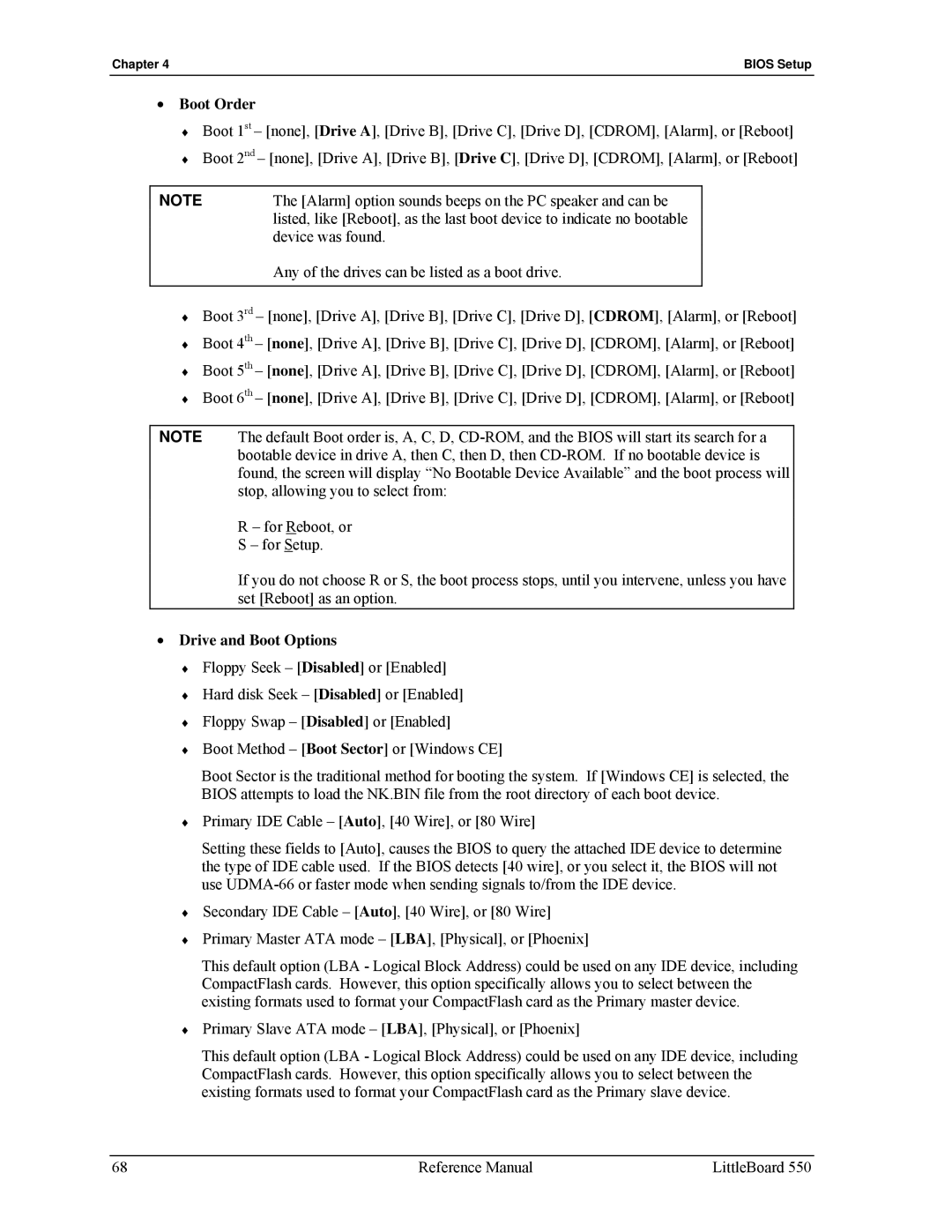
Chapter 4 | BIOS Setup |
•Boot Order
♦Boot 1st – [none], [Drive A], [Drive B], [Drive C], [Drive D], [CDROM], [Alarm], or [Reboot]
♦Boot 2nd – [none], [Drive A], [Drive B], [Drive C], [Drive D], [CDROM], [Alarm], or [Reboot]
NOTE | The [Alarm] option sounds beeps on the PC speaker and can be |
| listed, like [Reboot], as the last boot device to indicate no bootable |
| device was found. |
| Any of the drives can be listed as a boot drive. |
|
|
♦Boot 3rd – [none], [Drive A], [Drive B], [Drive C], [Drive D], [CDROM], [Alarm], or [Reboot]
♦Boot 4th – [none], [Drive A], [Drive B], [Drive C], [Drive D], [CDROM], [Alarm], or [Reboot]
♦Boot 5th – [none], [Drive A], [Drive B], [Drive C], [Drive D], [CDROM], [Alarm], or [Reboot]
♦Boot 6th – [none], [Drive A], [Drive B], [Drive C], [Drive D], [CDROM], [Alarm], or [Reboot]
NOTE The default Boot order is, A, C, D,
R – for Reboot, or
S – for Setup.
If you do not choose R or S, the boot process stops, until you intervene, unless you have set [Reboot] as an option.
•Drive and Boot Options
♦Floppy Seek – [Disabled] or [Enabled]
♦Hard disk Seek – [Disabled] or [Enabled]
♦Floppy Swap – [Disabled] or [Enabled]
♦Boot Method – [Boot Sector] or [Windows CE]
Boot Sector is the traditional method for booting the system. If [Windows CE] is selected, the BIOS attempts to load the NK.BIN file from the root directory of each boot device.
♦Primary IDE Cable – [Auto], [40 Wire], or [80 Wire]
Setting these fields to [Auto], causes the BIOS to query the attached IDE device to determine the type of IDE cable used. If the BIOS detects [40 wire], or you select it, the BIOS will not use
♦Secondary IDE Cable – [Auto], [40 Wire], or [80 Wire]
♦Primary Master ATA mode – [LBA], [Physical], or [Phoenix]
This default option (LBA - Logical Block Address) could be used on any IDE device, including CompactFlash cards. However, this option specifically allows you to select between the existing formats used to format your CompactFlash card as the Primary master device.
♦Primary Slave ATA mode – [LBA], [Physical], or [Phoenix]
This default option (LBA - Logical Block Address) could be used on any IDE device, including CompactFlash cards. However, this option specifically allows you to select between the existing formats used to format your CompactFlash card as the Primary slave device.
68 | Reference Manual | LittleBoard 550 |
